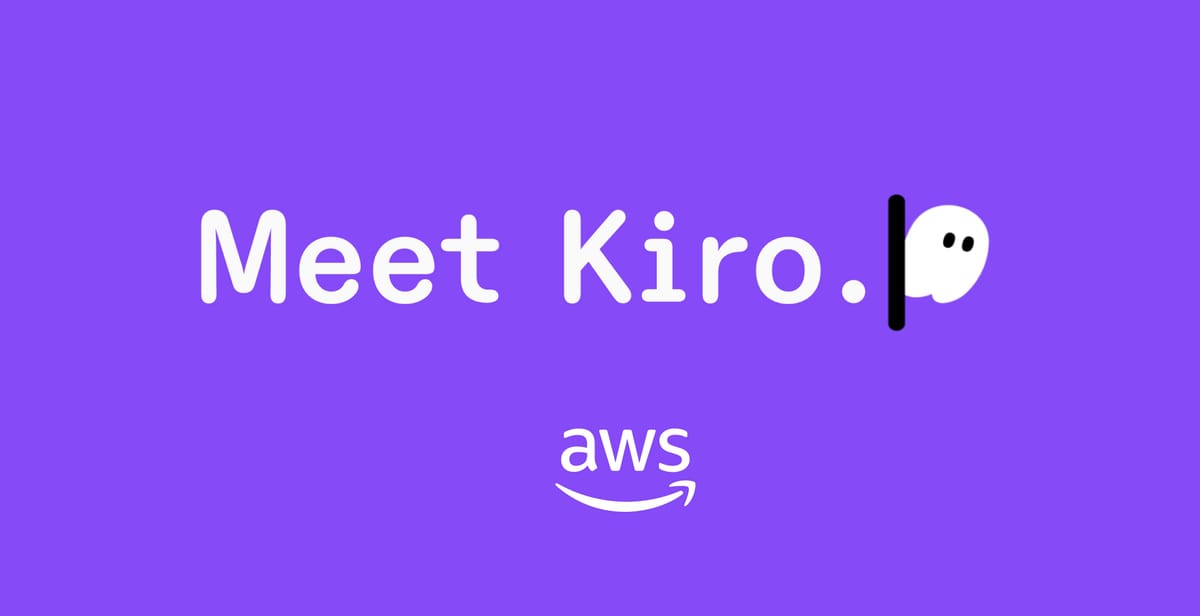
Amazon Web Services has opened a free preview of Kiro, an AI-powered IDE that turns a single sentence into a fully documented, test-covered feature — then watches your repo for changes so it can fix the boring stuff.
Key Points:
- Kiro focuses on production readiness through "spec-driven development" that documents AI decisions and generates proper requirements before coding
- It's targeting the gap between prototypes and production where most AI coding tools fail, using automated "hooks" to catch issues before deployment
- Amazon is betting against pure autocomplete in favor of structured development that scales beyond quick demos
If you've played with AI coding tools, you know the drill. You type "build me a chat app," watch the magic happen, and boom—you've got working code in minutes. It feels incredible until you realize you have no idea what the AI actually built, why it made certain choices, or how to maintain any of it.
Instead of just generating code from prompts, Kiro starts by unpacking your vague request into actual requirements. Type “add a reviews feature,” and Kiro explodes that into user stories, acceptance criteria, and even Mermaid diagrams before touching a line of code. You can approve, edit, or veto each step — every decision becomes part of the artifact trail the IDE keeps in sync with your repo.
Kiro's biggest differentiator is what Amazon calls "hooks"—automated checks that run when you save files, commit code, or hit other triggers. Think of them as an experienced developer looking over your shoulder, updating tests when you change components, refreshing documentation when you modify APIs, or scanning for security issues before commits. The goal is preventing the technical debt that accumulates when AI generates code faster than humans can review it.
Once the spec is locked, Kiro’s agents slice the work into sequenced tasks, generate code plus unit and integration tests, and show live diff views as they commit. Meanwhile, hooks lurk in the background: save a React file and Kiro writes the matching test; tweak an API route and the README updates; try to commit secrets and it blocks the push.
This isn't Amazon's first rodeo with AI coding. They already have Q Developer, which competes directly with GitHub Copilot on autocomplete. But Kiro represents a bigger bet on the future of AI coding.
AWS says the tool is free (during the beta preview) “with some limits” and runs on macOS, Windows, and Linux. Under the hood it’s still Code OSS, so your keyboard shortcuts, Open VSX extensions, and color theme come along for the ride. The team is also touting “Model Context Protocol” support for plugging in outside agents, hinting at an ecosystem play that mirrors what LangChain and OSS agent hubs are chasing.
It arrives into a crowded pit. Microsoft’s GitHub Copilot Workspace already lets devs describe a project and get step-by-step plans in a browser IDE, though it’s still slowly peeling off a wait-list. Google just folded Project IDX into Firebase Studio, a Gemini-powered environment that can sketch full-stack apps from sketches and ship them straight to Firebase hosting.
The bigger question is whether builders actually want this level of structure. The appeal of AI coding tools is their speed and simplicity—type what you want, get working code, move on. Kiro asks you to slow down, think through requirements, and follow more formal development practices. That might sound boring compared to the magic of instant code generation, but it also might be exactly what's needed as AI coding moves from fun demos to serious business applications.
For now, Kiro feels like AWS’s play to keep cloud-native teams in its orbit as the definition of “coding” drifts further from traditional approaches. And if their "hooks" really do catch your leaked keys before Git-push, nobody’s going to miss that part of the old workflow.

